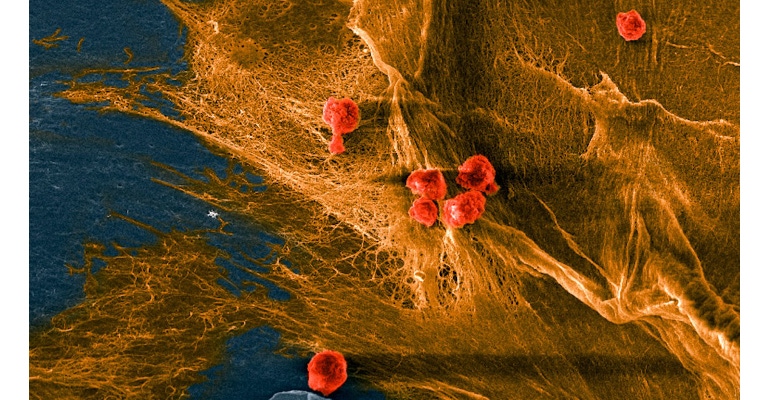Bio-Based Material Acts Like Human Cartilage
A novel hybrid material that combines strength and flexibility holds promise to replace damaged tissue to match natural performance.
August 10, 2022

Researchers have been seeking artificial ways to reproduce natural human cartilage and tendons in terms of performance, so far to little success given the complexity of these tissues. Now researchers at Cornell University may have found a promising approach to mimicking natural tissue with the development of a strategy for synthesizing clinical solutions for damaged human cartilage, they said.
A team—co-led by Lawrence Bonassar, professor in biomedical in the College of Engineering and Nikolaos Bouklas, assistant professor in the Sibley School of Mechanical and Aerospace Engineering—have engineered a biohybrid composite material that can mimic both the inherent strength and flexibility of natural human cartilage found in joints like knees and ankles, researchers said.
The material is comprised of two principal materials—collagen, which provides softness and biocompatibility, and a synthetic zwitterionic hydrogel, which contains positively and negatively charged molecular groups that provide the reaction necessary for durability, Bonassar said.
“These charge groups interact with the negatively and positively charged groups in the collagen, and this interaction is what enables the materials to dissipate energy and achieve high levels of toughness,” he said in a article for the Cornell Chronicle.
Indeed, human cartilage is a complex material—strong enough to take on a lot of weight but also flexible enough to cushion the impact on joints and stretch and twist in different directions. Past solutions to repairing the wear or tear of cartilage have been in the form of collagen hydrogels and other synthetic materials with properties that have been used for tissue replacement. However, neither alone so far have possessed the right combination of biological and mechanical properties of natural tissue to be a long-term solution, researchers said.
Material Built for Strength and Durability
This new invention out of Cornell may well be one solution the problem, a complement to others that separate researchers have developed. The biohybrid composite developed by the team approaches the performance of articular cartilage and other biological tissues, with 40 percent more elasticity and 11 times the fracture energy of the zwitterionic material by itself, they reported. Moreover, the material’s biocompatibility means it can recruit cells and keep them alive, Bouklas observed.
“Ultimately, we want to create something for regenerative medicine purposes, such as a piece of scaffold that can withstand some initial loads until the tissue fully regenerates,” he said in the article. “With this material, you could 3D print a porous scaffold with cells that could eventually create the actual tissue around the scaffold.”
Moreover, once the two key ingredients of the material are mixed, the resulting hybrid self assembles into “the same interconnected network of collagen seen in natural cartilage, which otherwise would be extremely hard to produce,” Bouklas said.
Researchers published a paper on their work in the journal Proceedings of the National Academy of Science.
Researchers plan to continue to investigate the material and the molecular processes behind its synthesis so they can use it in bioprinting. This means that replacement solutions for cartilage that use the material may one day be 3D-printed, they said.
About the Author(s)
You May Also Like
.jpg?width=300&auto=webp&quality=80&disable=upscale)


